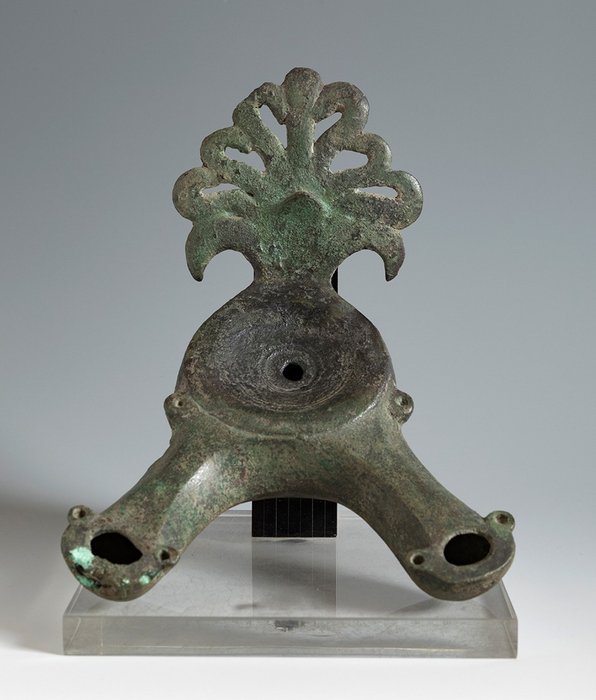
Ancient Roman Bronze Oinochoe. 3rd century BC. 15 cm H.
No. 84564721

No. 84564721

Oil lamp double spout.
Roman Empire, 3rd - 4th century AD.
Bronze
Size: 16,5 cm Large
STAND DISPLAY INCLUDED.
Condition: Damaged, see photos.
Provenance: Private collection, Saint - Cloud, France, before 1980.
Lucerne in bronze, with double beak and decorated with an openwork acanthus leaf in its ovals. The word lucerna comes from the Greek "lukno". Its basic function was to give light, but it was also used as a votive and funerary element. The first skylights were made by hand, then by lathe, and from the 3rd century B.C. by mold. The mold consisted of two dies, one for the upper part and one for the lower part. The mold manufacturing technique consisted of pressing the clay into the dies and then joining the two parts together. Finally, the handle was added.
Notes:
- The piece includes authenticity certificate.
- The piece includes Spanish Export License.
- The seller guarantees that he acquired this piece according to all national and international laws related to the ownership of cultural property. Provenance statement seen by Catawiki.
#ancientcivilisations
How to buy on Catawiki
1. Discover something special
2. Place the top bid
3. Make a secure payment